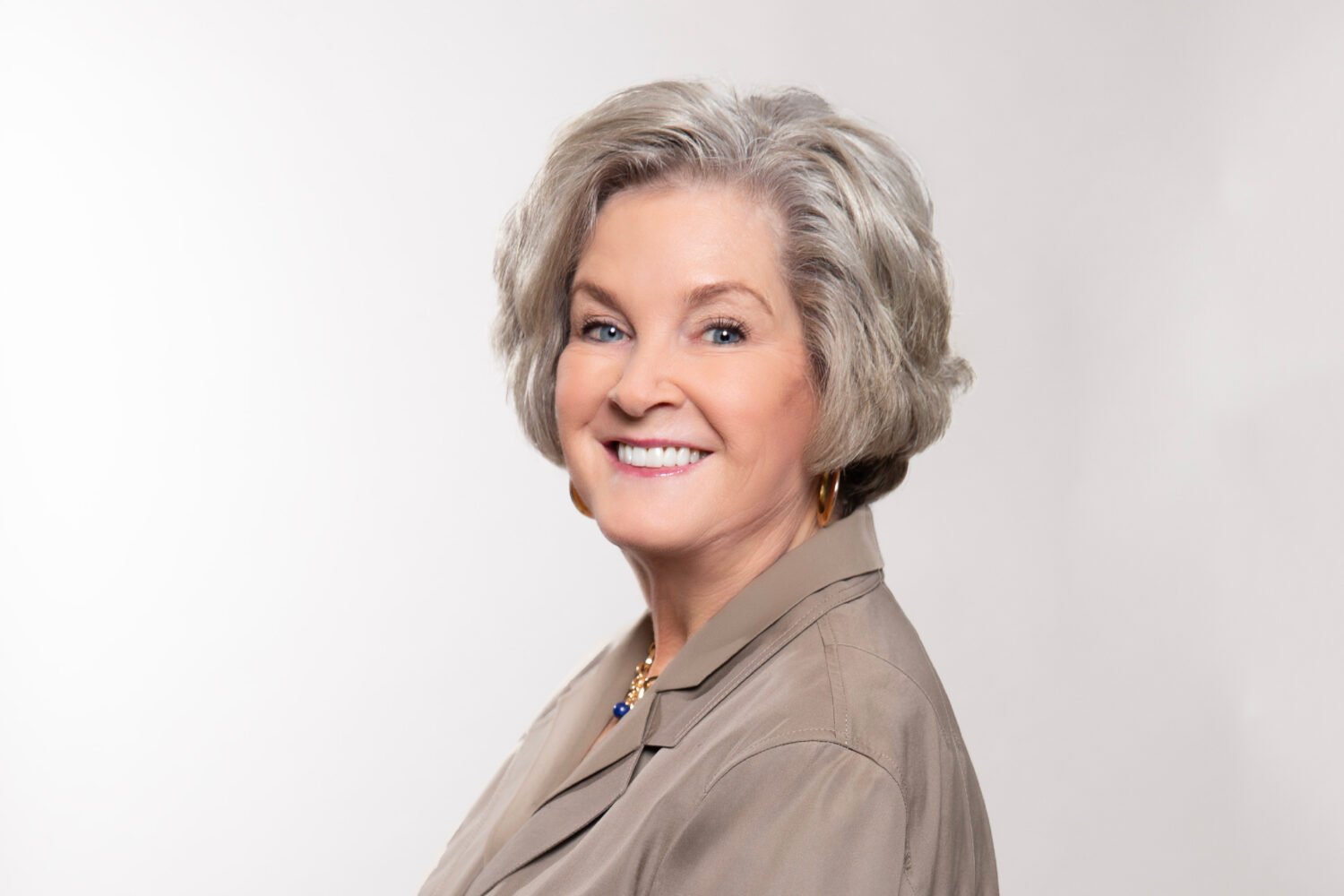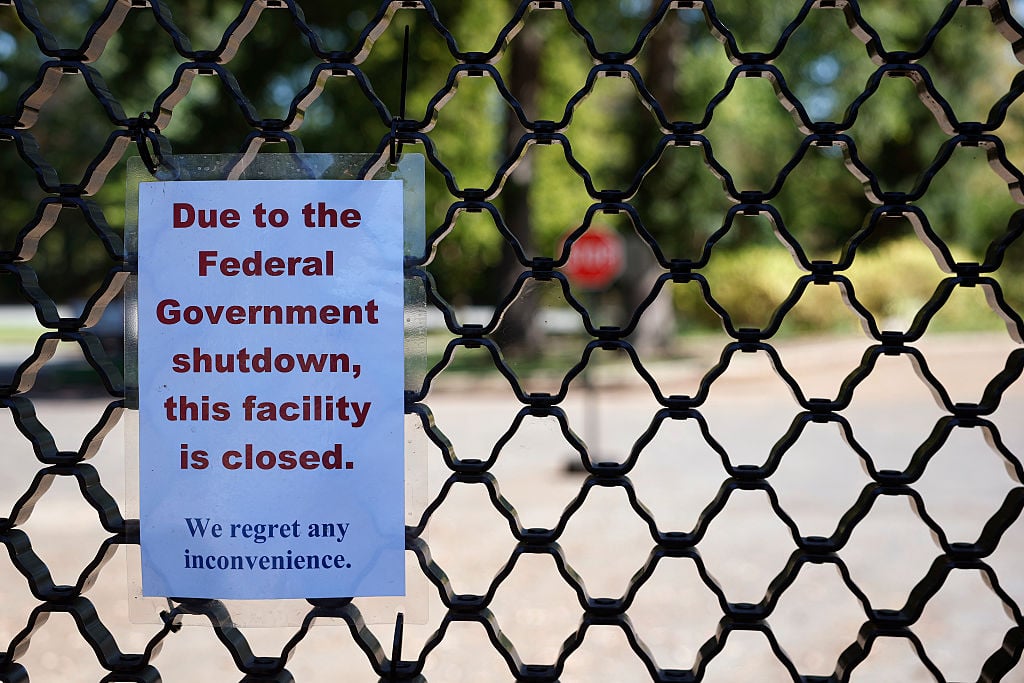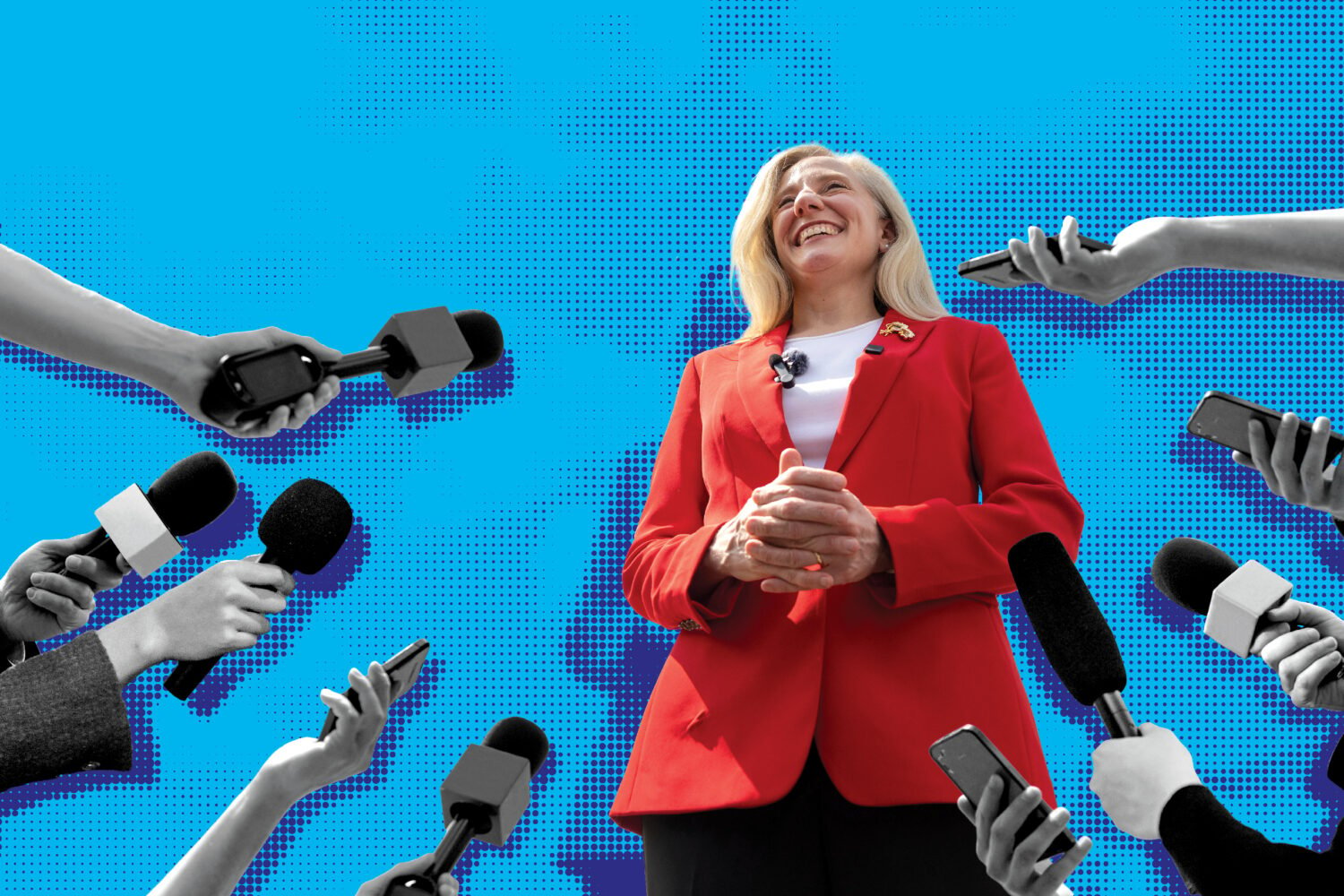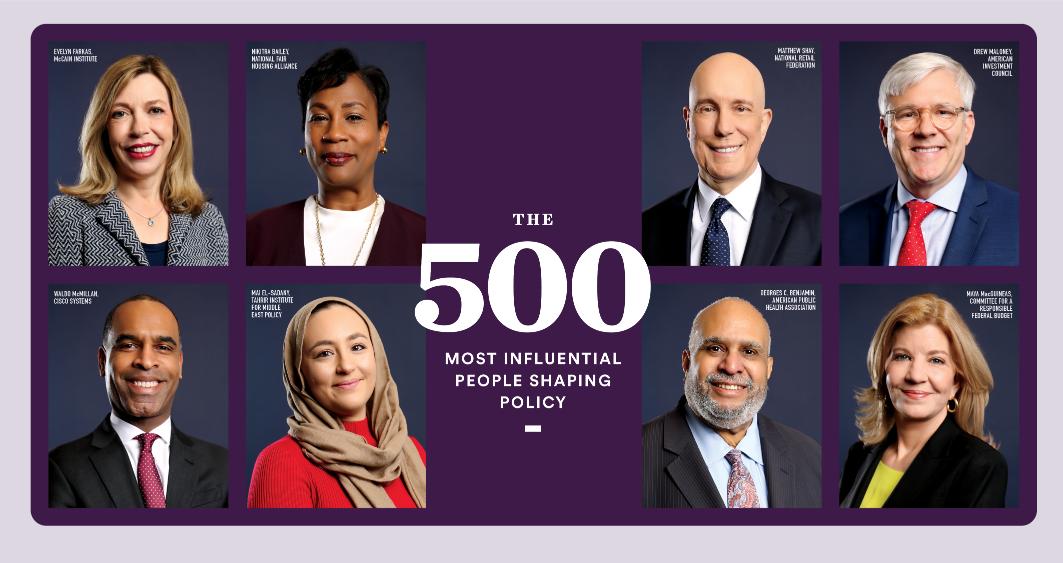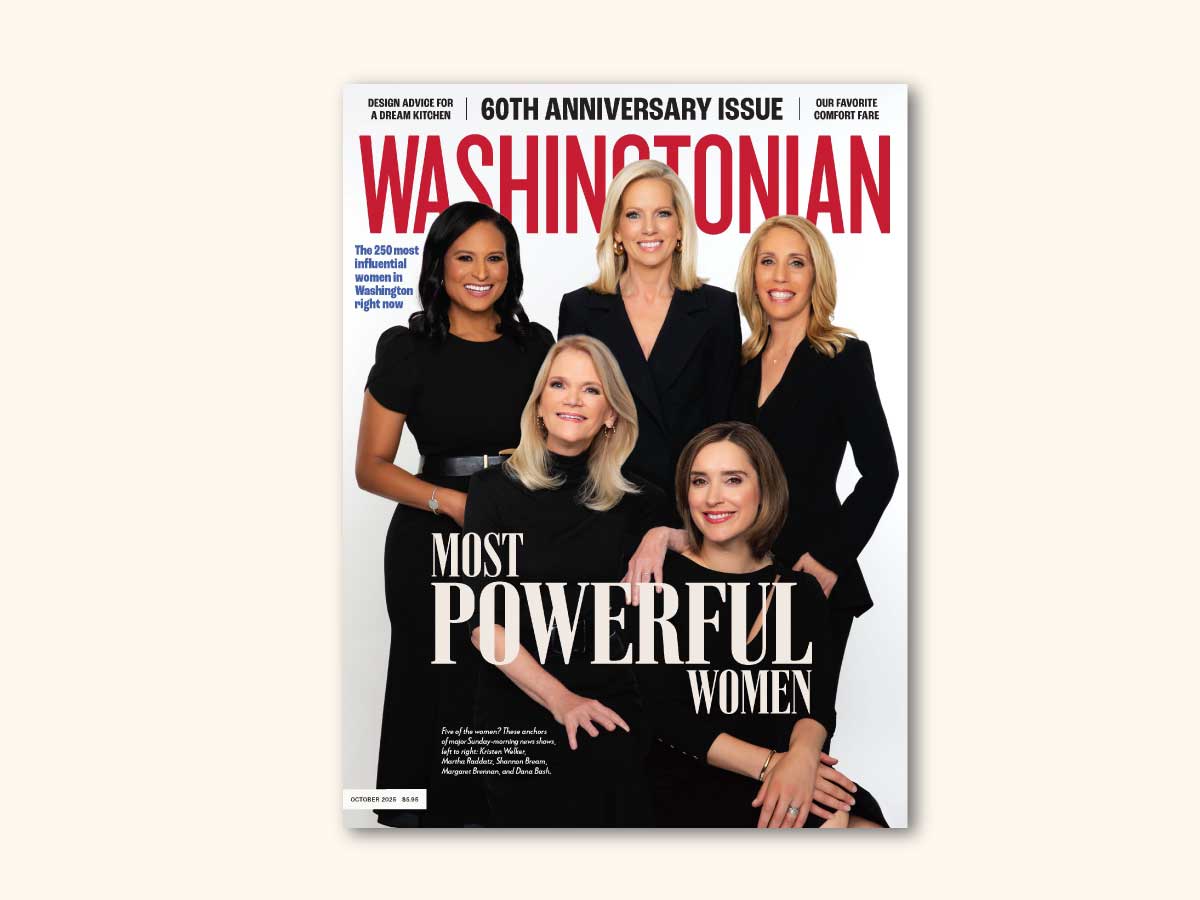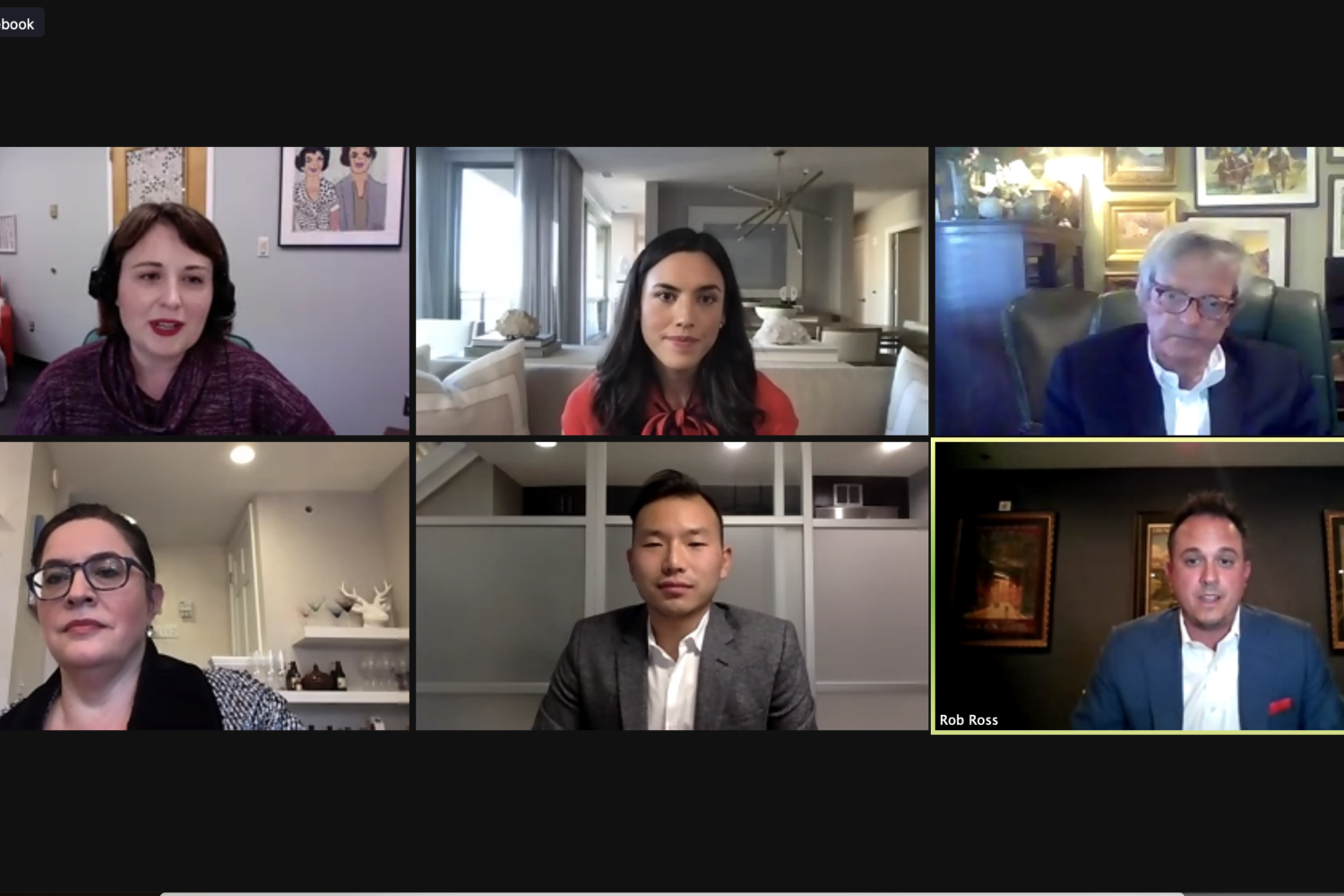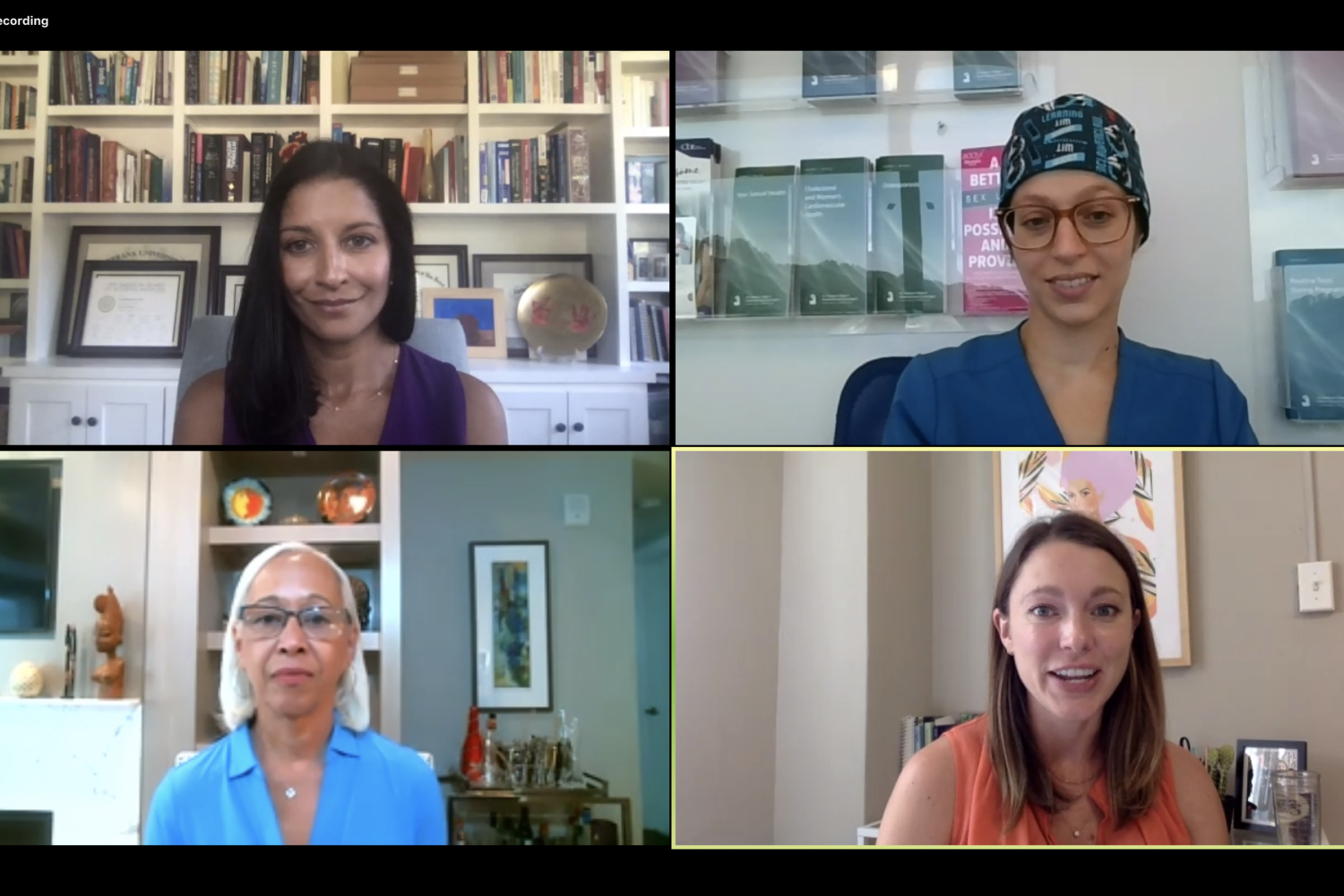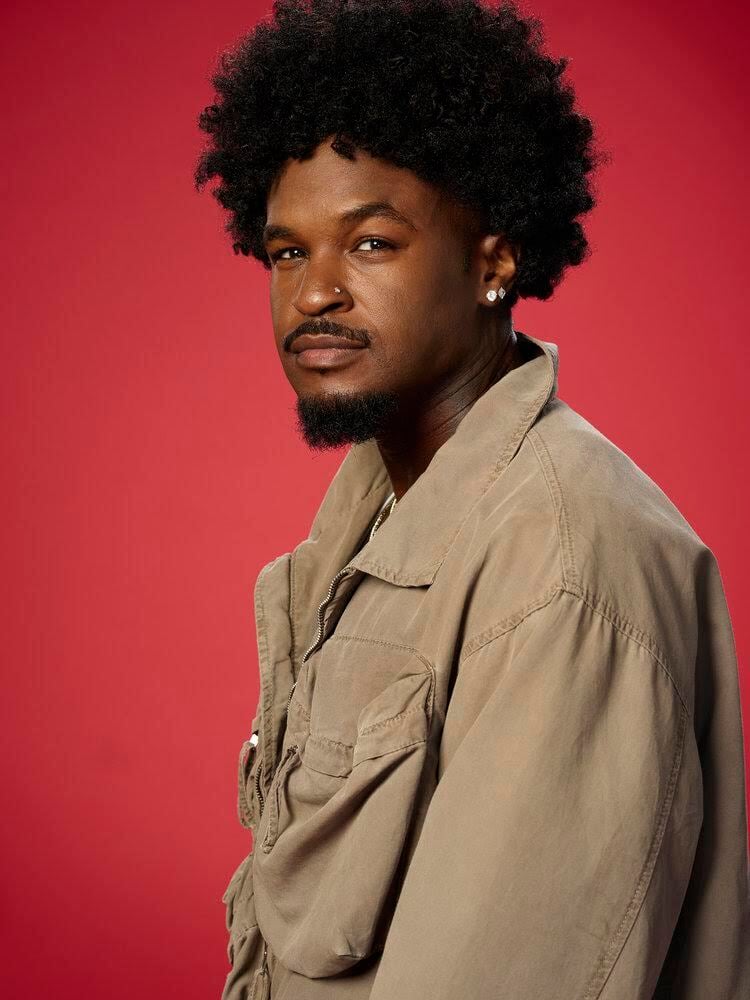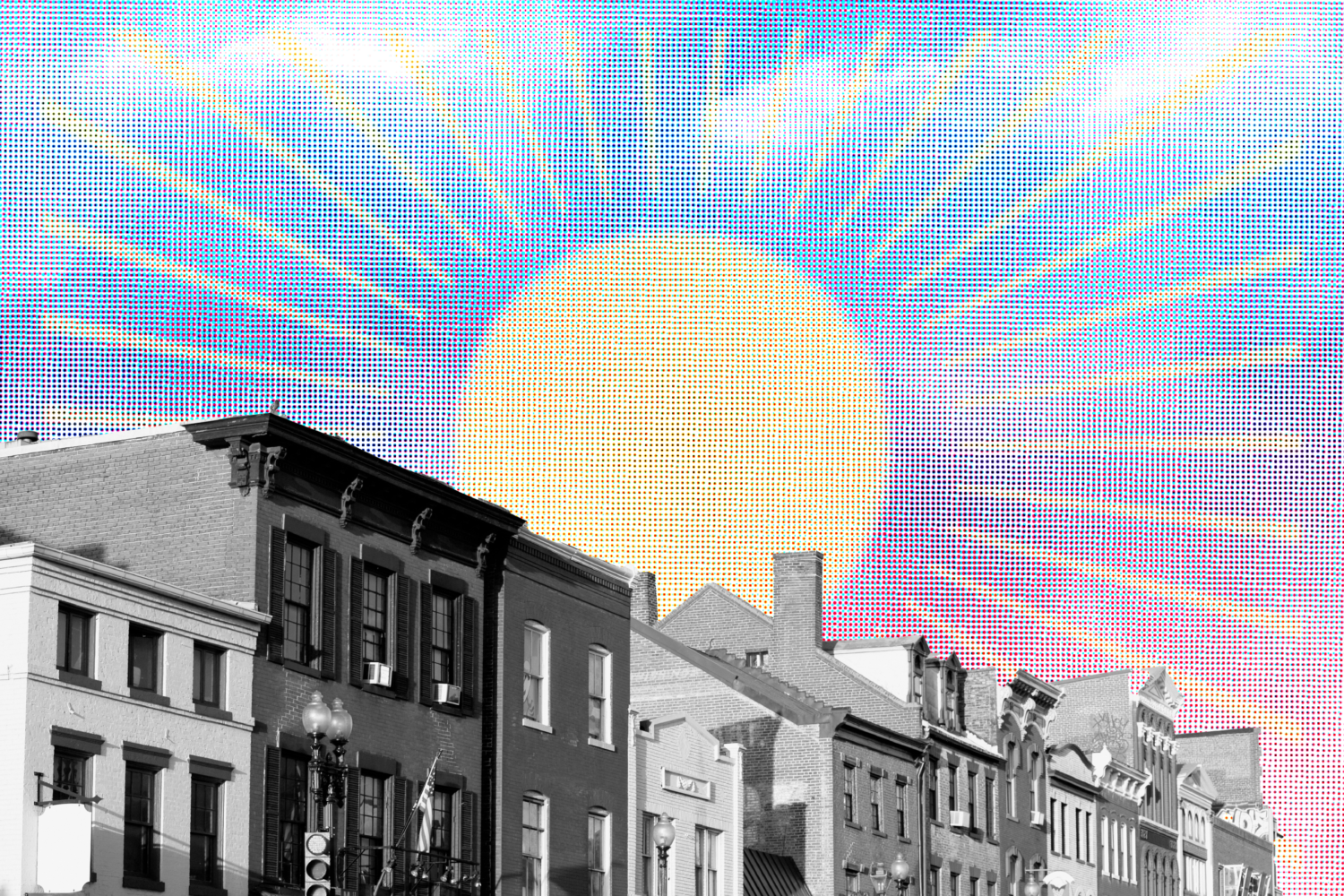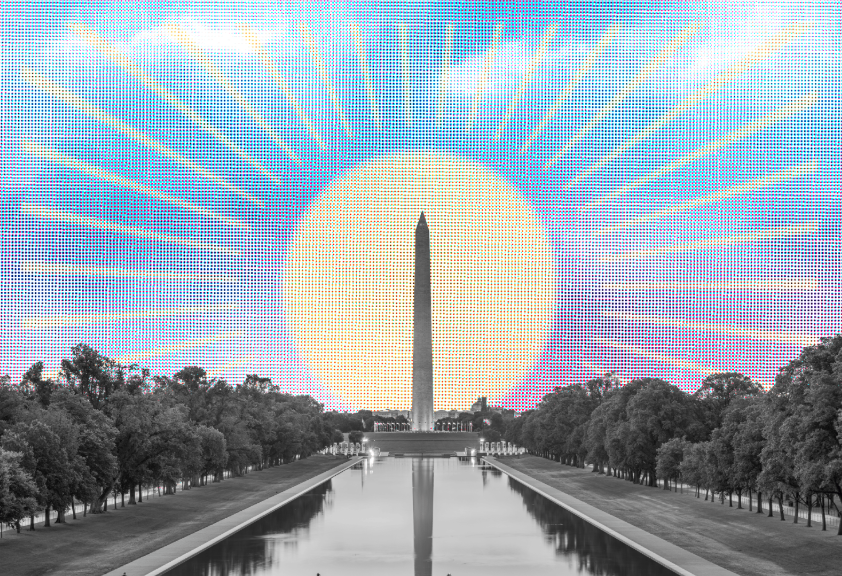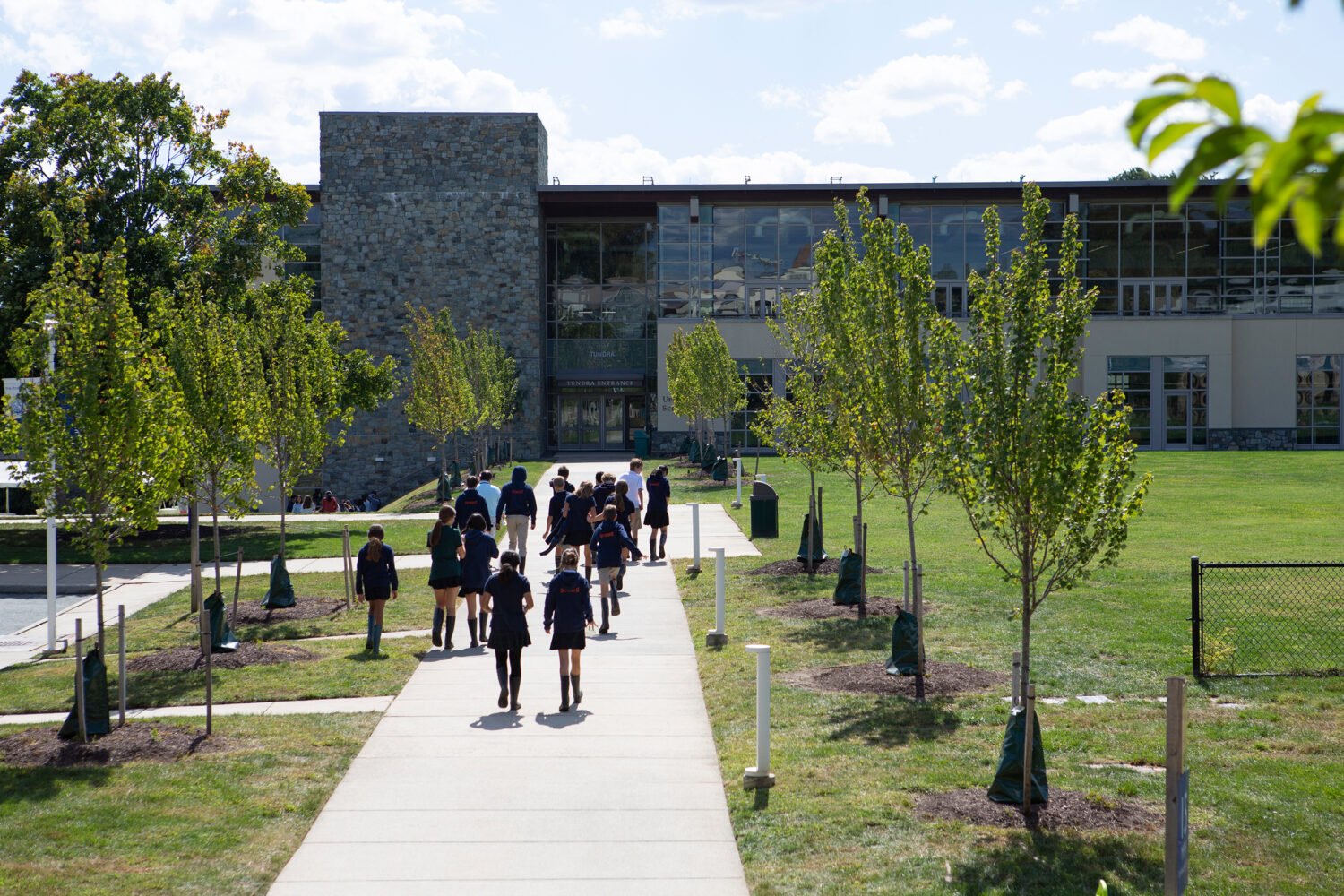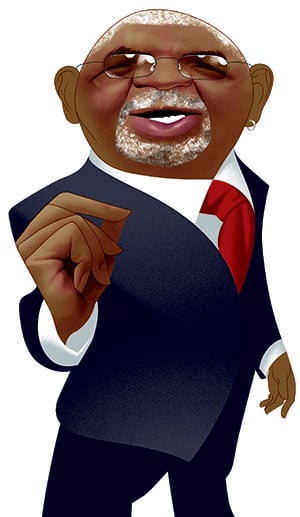
NBC4 reporter Mark Segraves grew up in Washington under the influence of three journalists: his mother, Frances, a reporter for the Baltimore Sun; his father, John, an editor at the Washington Star who thought television news was the end of civilization; and Jim Vance, who came into their home on the evening news.
Recently, Segraves interviewed Vance, now a Channel 4 colleague, about the state of TV news for NewsPlus, Segraves’s Sunday-morning public-affairs program on Channel 50. To his surprise, he found that Vance had come to agree with his father’s view of the medium, attacking TV news for being driven by focus groups more than by reporting. In the 25-minute interview, Vance also spoke with characteristic candor about the gentrification of Southeast DC and when not to ask him for a selfie.
After watching the tape—recorded in June at NBC4’s studio—management at Channel 50 decided against airing an interview containing such frank comments about a competitor. Segraves came to Washingtonian with the transcript, excerpts of which follow.
Forty-five years at one place is an amazing accomplishment, but at NBC4 it’s not unusual for people to spend their entire career here. What makes this newsroom such a special place?
Somehow or another, this company has always been not only welcoming but had a sense of causing people to feel valued. The floor director felt as necessary as the news director.
After GE bought the place, they cut to the bone. It wasn’t such a pleasant place to work. But it turned around again; it’s been a cyclical thing. Except for a very few of those 45 years—no more than five of them, maybe eight at the most—this has been a place where everybody felt valued.
I think it matters to the viewers.
That translates. You can’t bullshit people through that camera. It will detect and magnify disingenuousness in a minute. You can’t fake it.
What’s it like to be Jim Vance in Washington?
I’m happy to say that I’m not wallpaper. I mean that sincerely. I know some colleagues get disturbed that people want to talk, ask for an autograph, take a selfie. I never have. My only limit is if I’m at a restaurant and I have a fork halfway between my plate and my mouth—don’t grab my arm at that point.
Other than that, Vance is ready to go.
Bring it. Doing what we do, it’s a whole lot better to be noticed than to be ignored. It’s important for people to acknowledge, “Hey, dude—I know you, and you’re welcome in my house and with my family.” And it’s important for them to be acknowledged.
I learned that, I swear to God, from David Brinkley. He and I used to have snacks over at the diner on Connecticut Avenue. Brinkley’s notion was if somebody sees you on the street and you’re pleasant to that person, he’s going to tell ten people that the encounter worked out well. If you’re unpleasant, he’s going to tell at least 25. It just mathematically works out for you to be a nice guy.
But beyond that, my father and my grandfather were both plumbers, and from the time I could walk, I was cleaning fittings. I wanted to be a plumber—they made me go to college. My point is I know what it is to work hard for a little bit of money and no acknowledgement. So if somebody wants to come up and say hi because I bring them the news on a regular basis, I’m okay with that.
What are some of the biggest changes you’ve seen in the city in 45 years?
First thought that comes to mind is coming off of Good Hope Road [in Southeast DC] and I looked out of the truck—I forget what street I was on—and there was a young white couple pushing a baby carriage, with a dog on a leash, just off Good Hope Road. And I’m like, “Whoa! That’s different.”
Some people call that gentrification.
You can call it what you want; it’s a subject that can be debated. I can take either side, quite frankly. I can appreciate the value of what it brings in terms of tax revenue and help for the schools. But I also see it from the point of view of the displacement of longtime residents and, for lack of a better term, the institutional knowledge of the neighborhoods that is lost.
How about the news business here? Have we gotten better at it?
I came into this business in Philadelphia in 1966, ’67, on radio, which I still love. I was working in ’66 with the Philadelphia Independent, [at the time] one of the oldest black weekly newspapers in the country. I worked under totally old-school guys who revered their craft. Never anything less than craft, and for most of them it was art. We’re now way more into science than we are into art.
Science is good. There’s much to be said for the technology. [But] there’s something to be said for journalists being allowed to make judgments based on their training and on their familiarity with the subject matter and their audience—not some dude from Omaha, Nebraska, who takes computer numbers and 20 people in a focus group and from that determines what you need to do.
[Meteorologist] Doug Kammerer, he’s my man, but even he gets sick and tired of all the weather hits they make him do because all the research suggests you can’t do too much weather. That’s bullshit—you can easily do too much weather. I’ve got no beef with consumer information—it’s necessary and important. But not at the expense of any other number of stories that also have resonance with people.
There was a time when we were, “If it bleeds, it leads”—that’s uncomfortable too. We got away from that, not because the focus groups said you’re doing too much crime but because in the morning meetings the reporters were saying, “Come on, run the piece we did a week and a half ago.” Change the names and it’s the same damn story.
Our boss now, I have as much respect for him as I’ve had for any news director. What he is trying to do is integrate that science with the art. The best thing you can do for Mike [Goldrick] is to write a good story, craft a good piece.
We had a storytelling seminar today!
They didn’t invite me. Is that the first sign?
When they ask for your playbook . . . .
I am not happy at all with the way the business has gone—way more toward the science at the expense of the art. Rarely do I see a young person in here who doesn’t have a tablet or a phone out. I am one of the few people who carries a pencil and a pen at all times. I write things down. This is how I roll.
I love their commitment to all the technology that’s available. But they know nothing of how the business used to be. I’m not going to suggest that the way we used to do it is the way we should do it now, or that the way we used to do it was the best. Good Lord, did we make mistakes. But the business has changed, probably for the better—but not for me.
Mark Segraves (mark.segraves@nbcuni.com), a native Washingtonian, lives in Tenleytown with his wife and their two sons. Watch his full interview with Vance below.
Washingtonian‘s Jim Vance
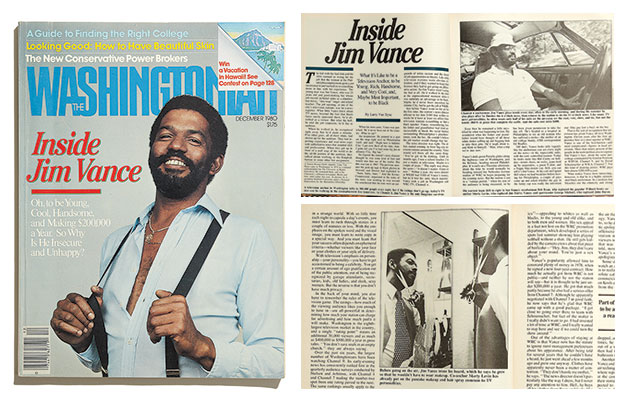
Almost as long as Jim Vance has been on the air in Washington, the magazine has been writing about him. He first made the cover in 1980, speaking frankly in the accompanying story about his unexpected rise and his insecurity about his success.
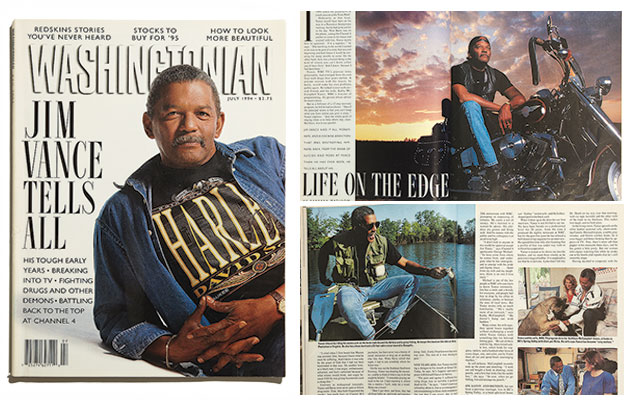
In Vance’s second cover story, in 1994, he again opened up about his struggles, including a near-suicidal bout with drugs that gave him perspective on his early career. “I cried when I first heard that Marion [Barry] was arrested,” he said.
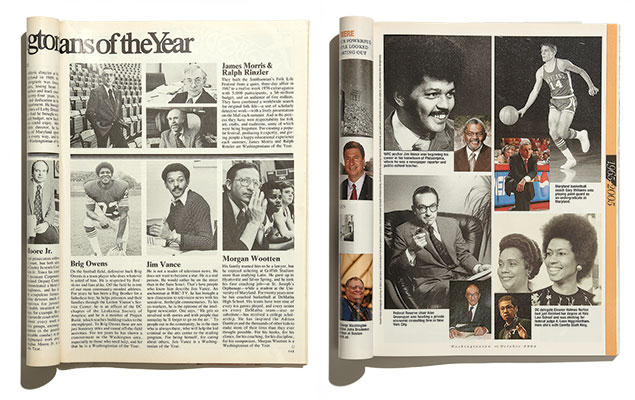
In 1976 (left), he was a Washingtonian of the Year, cited for his care for people whose stories he told and “being himself.” Right, another issue shows Vance in the mid-’60s.
This article appears in the October 2014 issue of Washingtonian.

